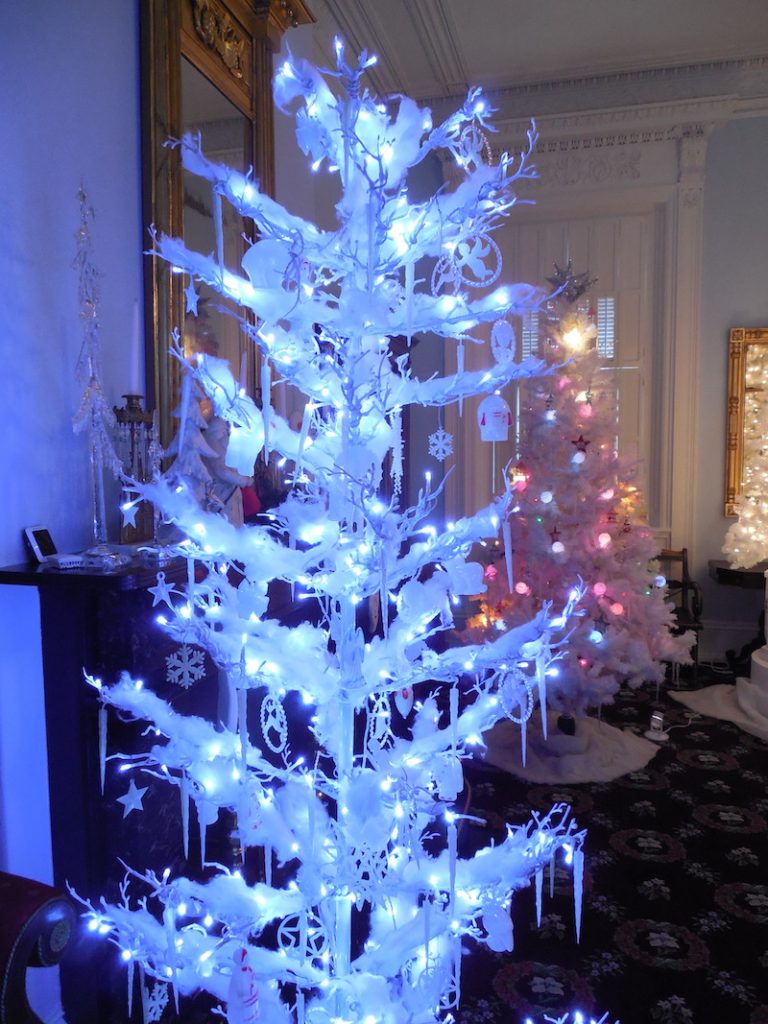Culture
‘A Russian Christmas’ Attests to the Strength of the Human Spirit
By: Emily Votaw
Posted on:
Through January 8, 2021, the Decorative Arts Center of Ohio will feature a virtual version of their A Russian Christmas exhibition, curated by George and Jeanne Johnson.
Tying in with the museum’s upstairs Russian Decorative Arts from the Tsars to the USSR exhibition, the Johnsons have decked out the lower levels of the Decorative Arts Center with pieces that embody the complex and fascinating history of Russian holiday celebrations.

From showcasing aluminum trees in the museum’s Double Parlors that allude to the anxious and exciting days of the Cold War-era Space Race, to a Rising Room decked out with iconic Christopher Radko ornaments, the exhibition explores the many ways in which holiday jubilation, as well as the human spirit, has triumphed even in the face of enormous subjugation.
“In looking at these pieces, we begin to see the human side of Russian culture and not just the missiles and the fear of a nuclear war which dominate the international stage,” said George Johnson. “We begin to see the Russians, the Polish, the Czechs, the Romanians, as people. Dominated certainly by the Soviet Bloc, but as people, as human beings. And that is the only way I think we can really keep moving towards world peace — seeing people as people, and not as the enemy.”
The exhibition begins with Imperial Russia, where the celebration of Christmas was nearly indistinguishable from the celebration of the holiday in England or any of the Germanic countries of Europe. Some of this similarity in style can be attributed to the fascinating fact that Tsar Nicholas II of Russia, Kaiser Wilhelm II of Germany, and George V of England were all grandsons of Queen Victoria of England.
“We begin to see the Russians, the Polish, the Czechs, the Romanians, as people. Dominated certainly by the Soviet Bloc, but as people, as human beings. And that is the only way I think we can really keep moving towards world peace — seeing people as people, and not as the enemy.” – George Johnson, curator of the Decorative Arts Center of Ohio’s “A Russian Christmas” exhibition
With the rise of the Communist Party under the leadership of Stalin, religious celebration of Christmas was criminalized, and Christmas trees were banned from 1929-1935. After 1935, it became acceptable to celebrate New Year’s Day, and various Russian folktales became the images most associated with the celebration. Some of the most recognizable iconography from this period includes Ded Moroz or Father Frost (Дед Мороз), a Santa Claus like figure associated with Slavic pagan traditions sometimes accompanied by his granddaughter, the Snow Maiden Snegurochka (Снегурочка).
“In the ‘50s, Russia began to open up a little and they did what they called a ‘New Year’s Tree,’ which is essentially a Christmas tree but without any of the religious connotation,” said Johnson. “The main type of decorations on those types of trees were from Russian fairytales.”
One of the most popular was Cipollino, a tale of anthropomorphic vegetables being oppressed by anthropomorphic fruits. Like all great fairytales, the story is highly allegorical. In this case the story focuses on the fight of the vegetables, personified by Cipollino himself (Little Onion) representing the proletariat, fighting against the heavy hand of the upper class fruits, Prince Lemon and Lord Tomato.
Johnson said that in the midst of this unprecedented holiday season, he hopes the exhibition can serve as a reminder of the humanity that unites all of us.
“The whole world is suffering with the pandemic. We’re all humans and we’re all sharing this planet together,” said Johnson. “And right now we’re sharing in the catastrophe of this plague. None of my kids are coming home for the holidays because of the pandemic, and it’s the same across the nation. It’s the same in other countries. The pandemic is a human tragedy, not one done to only the United States or only a local family. It is in the softer side of culture, like the celebration of the holidays, that we can really be reminded that we all share similar tragedies and triumphs like those.”
Listen to WOUB’s interview with Johnson embedded above, and keep up to date on the Decorative Arts Center at this link.

